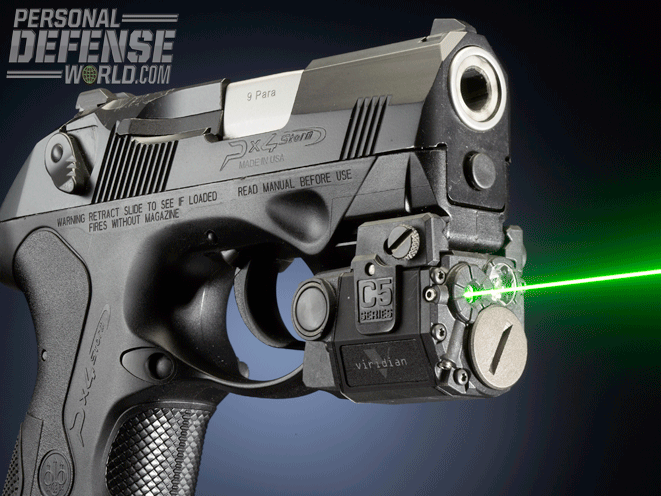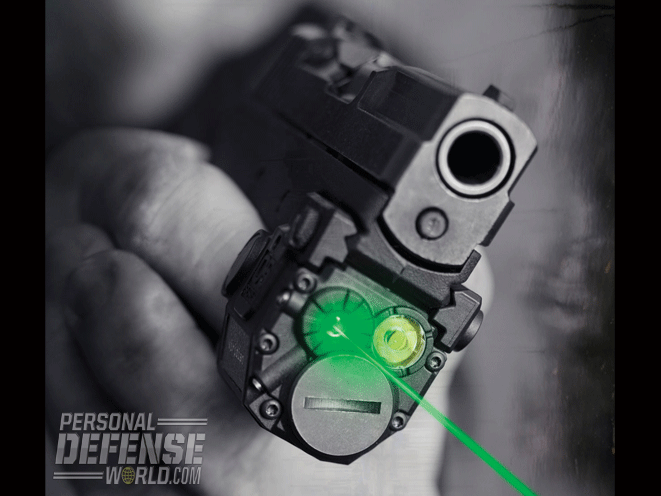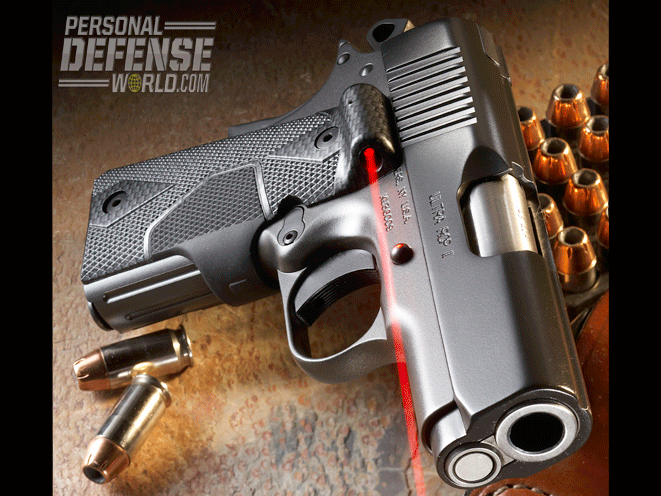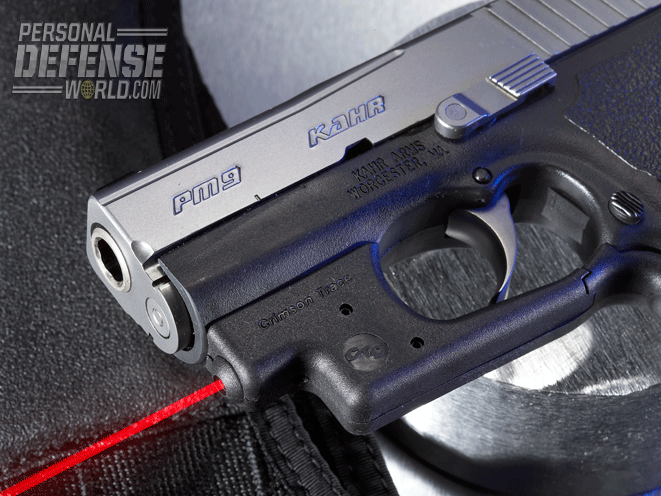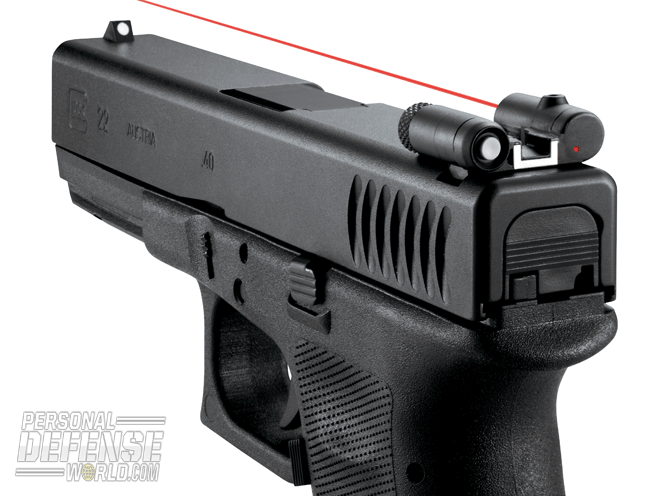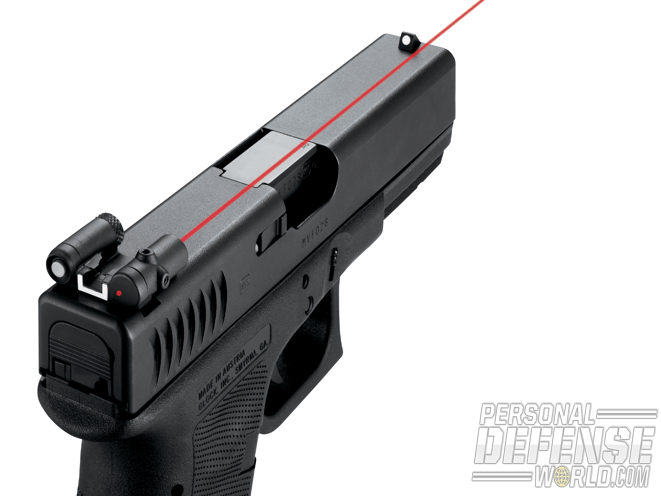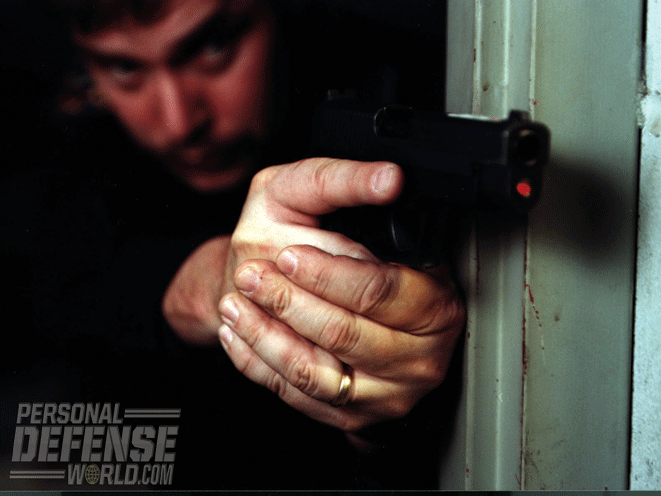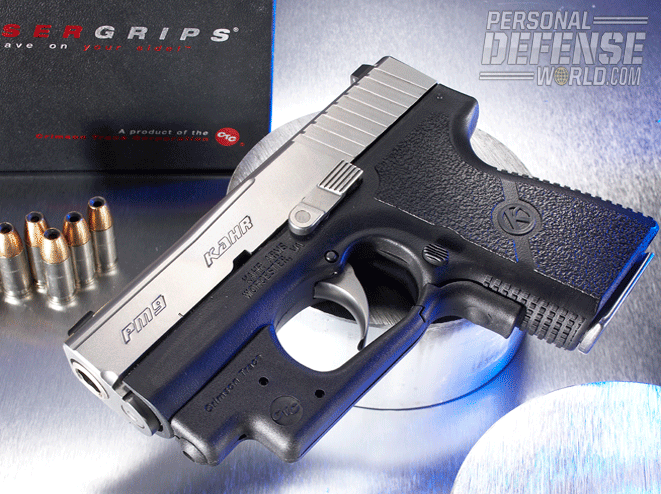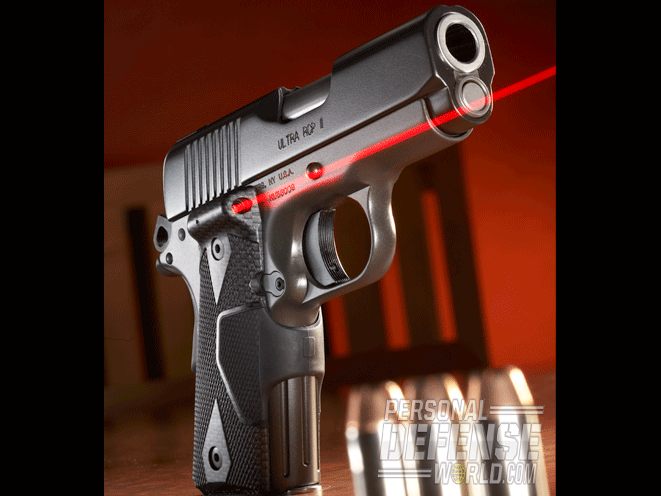By Paul Markel
Though they aren’t exactly a new idea, the use of laser aiming devices on firearms has evolved tremendously during the last decade. The technology has dramatically improved and the units have become more compact with longer battery life. But shooters and gun people thrive on debate—there is little doubt about that. Name any firearm, caliber, holster, etc. and you will find both “Pro” and “Anti” movements behind each. Laser sights are no different.
One of the biggest reasons many shooters will oppose laser-aiming devices is a misconception that novice gun owners have about these devices. Uninformed or uneducated gun owners often see laser sights as a way to overcome poor shooting or a lack of training. This proposition is absolutely false. Poor trigger control and a lack of training cannot be compensated by any type of sighting system. Good sights and optics enhance the capabilities of trained shooters, they don’t make up for shortcomings.
Advertisement — Continue Reading Below
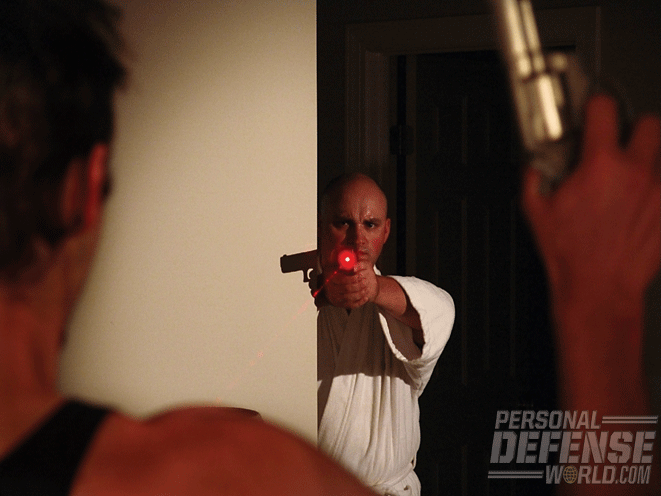
Laser Sights
I recently had someone tell me, “I’m not really a shooter. I just have a gun for personal protection.” This was said to justify his lack of training and practice. Folks, if you want to shoot tin cans, clay birds, or a paper bull’s eye target, that’s fantastic. All those areas are recreational shooting, it’s just for fun.
Keeping a firearm for personal defense, a “fighting gun,” if you will, is one of the most serious undertakings you will ever embark upon. Your fighting pistol, the one you actually carry on a daily basis, is the gun you’ll be using to save your life or that of your family. By the same token, you may be forced into a situation by your attacker where you take their life. That’s pretty serious business by any account.
Advertisement — Continue Reading Below
Fighting with a concealed carry handgun may require you to shoot from awkward positions—on your back, crouched behind cover, seated in a vehicle, etc. None of these positions are conducive to traditional shooting form.
When you have plenty of time, the sun is shining, and no one is trying to kill you, the standard sights on your pistols should serve you just fine. That’s not what fighting with a pistol is all about. When the time comes to fight with your pistol, time will not be on your side—you will likely be moving or shooting from behind cover. The light conditions more often than not will be poor. It is times like these that a laser sighting system will prove most valuable.
Related Stories: 8 Reflex Sights That Will Have You Shooting Straighter
Advertisement — Continue Reading Below
Pocket Pistols
It’s a fact that the handguns that are the most convenient to carry concealed are also the most difficult to shoot effectively. Compact-framed double-action revolvers and sub-compact autopistols have small grips, tiny sights, and quite often long, heavy trigger pulls. None of these translate to easy shooting.
These diminutive defenders are truly the models that can best be served by some type of laser sighting system. Should you decide that a laser sight is worth investigating further, there are several companies producing gear that may interest you; such as Crimson Trace, LaserLyte, LaserMax, and Viridian.
Advertisement — Continue Reading Below
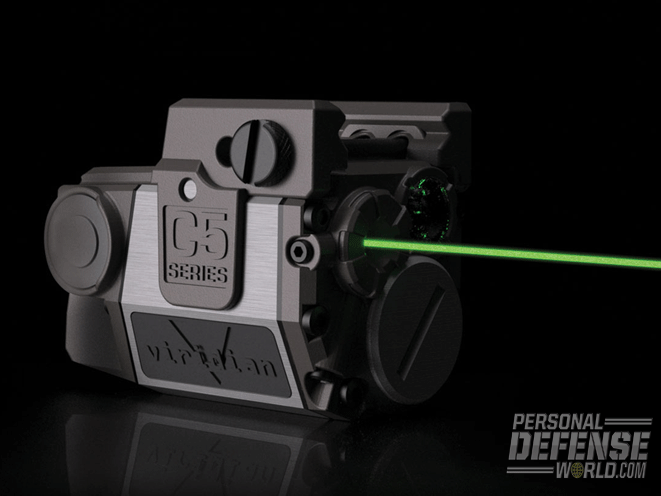
Each manufacturer has its own way of approaching the issue. Some mount the lasers atop the pistol, some underneath, while others in line with the barrel by replacing the recoil spring guide. If you are looking to conceal a handgun, the size of the laser unit will be a consideration. Also, you need to factor in whether or not the unit will work in conjunction with your favorite holster.
You will find a variety of activation switches and power supplies. Most used dime- or nickel-sized watch batteries, some use CR123 Lithium. Switches will vary from constant on/off to momentary pressure switches to a combination of the two.
Related Stories:Product Spotlight: Viridian Reactor R5 Red Laser Series
Advertisement — Continue Reading Below
Practice, and More Practice
If you’re serious about saving your own life with any piece of gear, you need to get some quality training and practice, practice, practice. Even if you are an experienced shooter, using a laser sight will take some getting used to.
One of the primary mistakes folks will make with a laser sight is trying to hold the handgun perfectly still until the laser dot is no longer moving. This is next to impossible for two reasons. First, your body, as long as you have a heartbeat and are breathing is constantly in motion. Maybe not a lot, but it’s moving. Secondly, the laser is actually pulsing. Some units will be more pronounced than others, but it is still a factor.
Advertisement — Continue Reading Below
A properly zeroed laser sight merely tells you that the bore of your gun is indexed on the target. For gunfighting you don’t need to cut the “x” ring out of a bull’s eye, you simply need to strike the target in the center consistently.
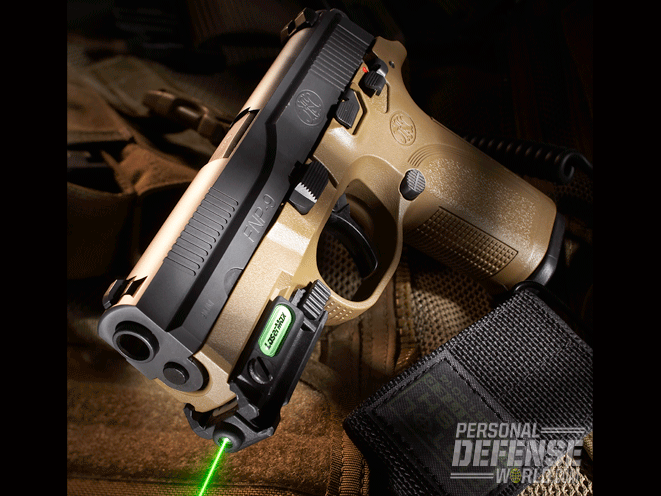
The Go Code
If the sunlight is bright, you will have a tough time seeing your laser dot but your target and iron sights will be easy to see. Conversely, if the light is poor or you are working with heavy shadows, the laser dot will stand out over the iron sights.
Advertisement — Continue Reading Below
Think of it like this, when you are indexing your handgun on target you are looking for some type of “Go Code,” or mental permission to fire. If the first thing you pick up is your front sight, that’s your Go Code. If the laser dot is the first thing your eyes pick up, then that’s fine too—use that as your Go Code.
Practice with your handgun until locating the Go Code becomes instinctive and you don’t need to take time to distinguish between the two. Training is the key… gear comes second. If you combine a winning mindset, good training and quality gear, you’ll find a winning trifecta.
This article was originally published in CONCEALED CARRY HANDGUNS® 2011. Print and Digital Subscriptions to CONCEALED CARRY HANDGUNS® magazine are available here.
Advertisement — Continue Reading Below
Related Stories: Preview: Top 10 Ultra-Compact CCW Laser Sights
